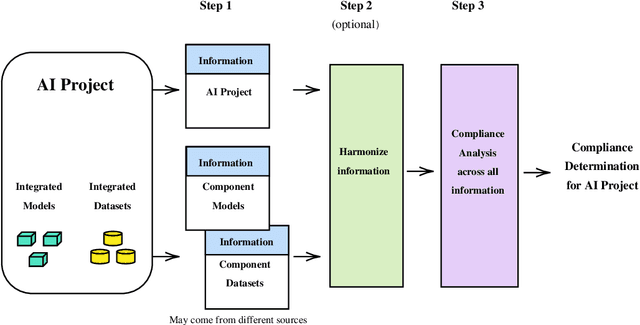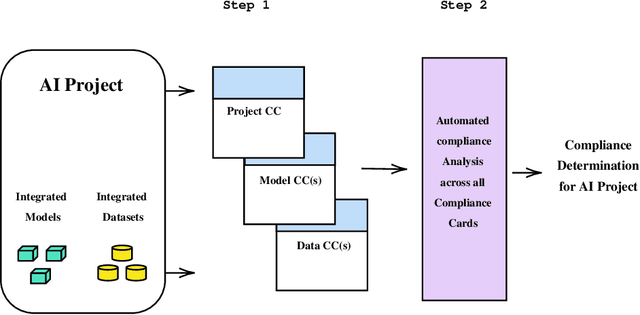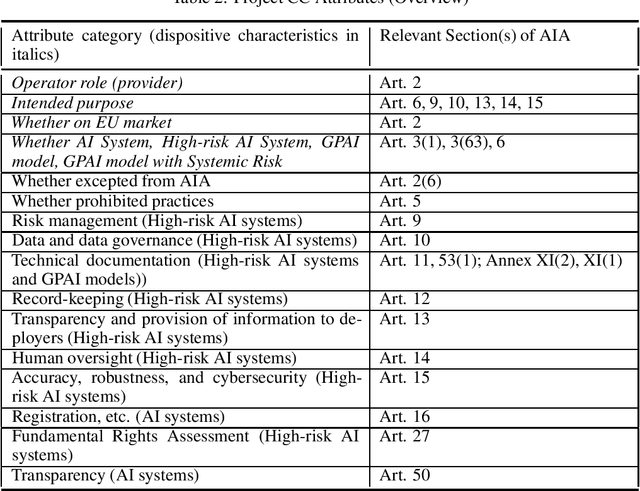Compliance Cards: Computational Artifacts for Automated AI Regulation Compliance
Paper and Code
Jun 20, 2024



As the artificial intelligence (AI) supply chain grows more complex, AI systems and models are increasingly likely to incorporate externally-sourced ingredients such as datasets and other models. In such cases, determining whether or not an AI system or model complies with the EU AI Act will require gathering compliance-related metadata about both the AI system or model at-large as well as those externally-supplied ingredients. There must then be an analysis that looks across all of this metadata to render a prediction about the compliance of the overall AI system or model. Up until now, this process has not been automated. Thus, it has not been possible to make real-time compliance determinations in scenarios where doing so would be advantageous, such as the iterative workflows of today's AI developers, search and acquisition of AI ingredients on communities like Hugging Face, federated and continuous learning, and more. To address this shortcoming, we introduce a highly automated system for AI Act compliance analysis. This system has two key elements. First is an interlocking set of computational artifacts that capture compliance-related metadata about both: (1) the AI system or model at-large; (2) any constituent ingredients such as datasets and models. Second is an automated analysis algorithm that operates across those computational artifacts to render a run-time prediction about whether or not the overall AI system or model complies with the AI Act. Working together, these elements promise to enhance and accelerate AI Act compliance assessments.
 Add to Chrome
Add to Chrome Add to Firefox
Add to Firefox Add to Edge
Add to Edge